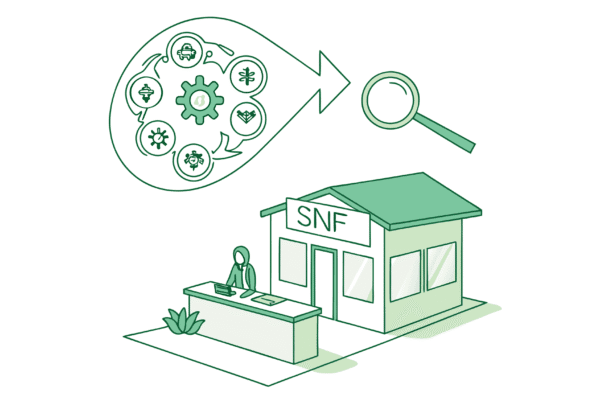The Seattle market for Geriatric Behavioral Health presents a significant opportunity for practice owners considering a sale. Demand is high, and the acquisition landscape is active. However, turning this favorable climate into a successful exit requires more than just a willing buyer. It involves strategic preparation, a deep understanding of your practice’s value, and careful navigation of the sale process. This guide provides the insights you need to get started.
Market Overview
Your Geriatric Behavioral Health practice sits at the intersection of two powerful trends in Seattle. First, King County’s population of residents aged 60 and over is rapidly expanding. It is projected to make up nearly a quarter of all residents by 2025. This creates a growing, built-in patient base for your services. Second, the national behavioral health market is thriving. It is expected to grow at over 5% annually, reaching more than $132 billion by 2032. This combination of local demand and national investor interest creates a very favorable environment for practice owners who are considering their exit options.
Key Considerations
Beyond the numbers, sophisticated buyers look at the underlying structure and risks of a practice. For a Geriatric Behavioral Health practice in Seattle, they will focus on a few key areas.
Regulatory Standing
Your adherence to Washington-specific regulations is critical. Buyers will thoroughly review your licensure as a Behavioral Health Agency (BHA) and compliance with the state’s RCWs and WACs. Having your documentation organized and easily accessible is a sign of a well-run practice and can prevent major delays during due diligence.
Referral Networks
Where do your patients come from? A buyer will place a higher value on a practice with strong, documented referral relationships with local primary care physicians, hospitals, and assisted living facilities. These networks represent a predictable future revenue stream that is less dependent on you as the owner.
Technology and Telehealth
Your practice’s use of technology is no longer just a bonus. It’s a core component of its value. A modern Electronic Health Record (EHR) system and a robust telehealth platform are now expected. They demonstrate efficiency and an ability to meet patient demand for flexible care options.
Market Activity
The strong market fundamentals are not just theoretical. They are translating into real transactions. Despite shifting economic conditions, the behavioral health sector remains a hotspot for acquisitions. So far in 2024, there have been over 126 deals in the space. This high volume of activity shows that private equity groups and larger strategic buyers are actively deploying capital to acquire practices just like yours. This creates a competitive environment where well-prepared practices can command premium valuations. The key is to enter the market when buyer interest is high, and all signs indicate that the time is now.
The Sale Process at a Glance
Selling your practice is a structured process, not a single event. While every sale is unique, most follow a similar path. Understanding these stages helps you prepare for what lies ahead and avoid common roadblocks. Many sales run into trouble during the due diligence phase, but proper preparation can make this stage much smoother.
| Stage | Purpose | Common Pitfall |
|---|---|---|
| 1. Valuation & Preparation | Understand what your practice is worth and gather key financial and operational documents. | Using messy financials or a simple “rule of thumb” that undervalues your practice. |
| 2. Confidential Marketing | Present the opportunity to a curated list of qualified buyers without alerting staff or patients. | Speaking with only one buyer, which limits your negotiating leverage. |
| 3. Buyer Diligence | The potential buyer verifies your financials, operations, and regulatory compliance. | Disorganized records or surprise issues that erode trust and lower the offer. |
| 4. Negotiation & Closing | Finalize the price and terms in a definitive legal agreement. | Agreeing to unfavorable post-sale terms without understanding their long-term impact. |
How Your Practice is Valued
How do buyers determine a price? It is not based on revenue or assets alone. The starting point is almost always your practice’s Adjusted EBITDA its Earnings Before Interest, Taxes, Depreciation, and Amortization. We calculate this by taking your net income and adding back owner-specific costs like an above-market salary, personal vehicle leases, or other non-operational expenses. This gives a picture of the true cash flow available to a new owner. That Adjusted EBITDA is then multiplied by a numberthe multipleto arrive at your practice’s enterprise value. This multiple is influenced by factors like your payer mix, provider dependency, telehealth capabilities, and documented growth opportunities. Buyers do not just buy numbers. They buy a story of future success.
Planning for What Comes Next
A successful transaction is not just about the price you get at closing. It is also about ensuring a smooth transition for your staff, your patients, and yourself. Smart buyers and sellers agree on a post-sale plan long before the deal is final. Here are three things to consider:
- Your Role After the Sale. Do you want to continue practicing for a few years, or are you ready to retire? Defining your role, compensation, and timeline upfront is key to preventing future misunderstandings.
- Protecting Your Staff. Your team is one of your practice’s most valuable assets. A buyer who values your staff is often the right partner. We can help structure the deal to include retention bonuses or other incentives for key employees.
- The Second Bite of the Apple. Many modern deals involve “rollover equity,” where you retain a minority ownership stake in the new, larger company. This aligns your interests with the buyer and gives you the potential for a second, often larger, payout when the new entity is sold again in the future.
Frequently Asked Questions
What are the key market trends affecting the sale of a Geriatric Behavioral Health practice in Seattle?
The Seattle market is favorable due to King County’s rapidly expanding population aged 60 and older, projected to be nearly a quarter of all residents by 2025, which increases patient demand. Additionally, the national behavioral health market is growing at over 5% annually, expected to reach more than $132 billion by 2032, attracting significant investor interest.
What regulatory compliance is required when selling a Geriatric Behavioral Health practice in Seattle?
Compliance with Washington state-specific regulations is crucial. This includes licensure as a Behavioral Health Agency (BHA) and adherence to state laws under the Revised Code of Washington (RCWs) and Washington Administrative Code (WACs). Well-organized and accessible documentation of these compliances is necessary to avoid delays in the due diligence phase.
How is the value of a Geriatric Behavioral Health practice determined in Seattle?
The value is primarily based on the practice’s Adjusted EBITDA (Earnings Before Interest, Taxes, Depreciation, and Amortization), which reflects true cash flow by adjusting net income for owner-specific costs. This figure is multiplied by a market multiple influenced by factors such as payer mix, provider dependency, telehealth capabilities, and growth potential to arrive at the enterprise value.
What role does technology play in selling a Geriatric Behavioral Health practice?
Technology, especially a modern Electronic Health Record (EHR) system and robust telehealth platform, is vital. These demonstrate operational efficiency and the ability to meet patient demands for flexible care, enhancing the practice’s value and attractiveness to buyers.
What considerations should be made for staff and the owner’s role after the sale?
Planning for the post-sale period is important for a smooth transition. Owners should define their role and timeline, whether continuing practice or retiring. Protecting staff through retention incentives is advisable, and discussing options like “rollover equity” can provide owners with future financial benefits and align interests with new ownership.



